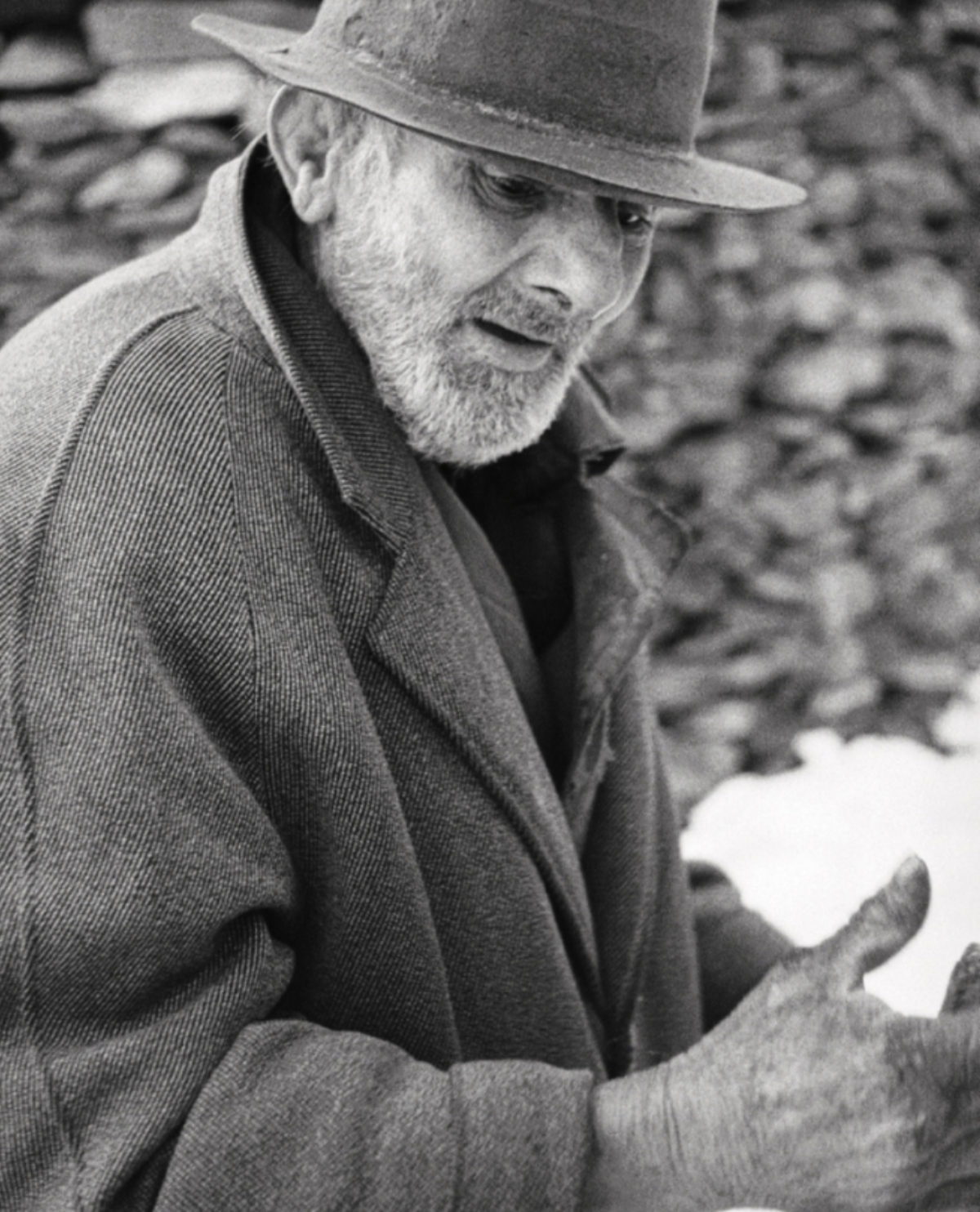Armand Schulthess
A New Book on the Encyclopedist in the Chestnut Forest of Auressio
Zürich
5.5.2022
In collaboration with galleria Edizioni Periferia. Ellinor Landmann in conversation with artist Ingeborg Lüscher and
publisher Gianni Paravicini
Over fifty years ago, artist Ingeborg Lüscher discovered a hermit in a remote valley in Ticino. Reclusive, he pursued his vision to create an open-air encyclopedia in the chestnut trees surrounding his home, assembling all the world’s knowledge. He hung small inscribed plaques, mostly lids from tin cans, in the trees. Ingeborg Lüscher documented conversations with the artist Armand Schulthess in a book and brought it to Documenta in 1972. It soon became a cult book, and the hermit gained fame after his death, with his work featured in numerous international exhibitions.
Armand Schulthess: born in 1901 in Neuchâtel; died on September 29, 1972, in Auressio. Over more than twenty years, Schulthess created a “Library of Knowledge” in his chestnut forest in Auressio. He inscribed thousands of small plaques – mostly made from tin – with knowledge collected from books and newspapers across various fields of culture and science. He hung these plaques on trees and shrubs or mounted them on walls and fences. Ingeborg Lüscher first showcased his work at Documenta 5 in 1972 in the “Individual Mythologies” section. Harald Szeemann continued to feature Schulthess’s extraordinary work in his major exhibitions. Max Frisch was inspired by Schulthess and his “Encyclopedia in the Forest” for his story Man in the Holocene. A comprehensive monograph was published by Edizioni Periferia in 2021.
Ingeborg Lüscher: born in 1936 in Freiberg, Saxony. After finishing high school in Berlin, Ingeborg Lüscher studied acting and went on to work in theater and film. In 1959, she married Swiss color psychologist Max Lüscher, and alongside acting, she began studying psychology at the Free University of Berlin. In 1967, she moved to Tegna in Ticino. From then on, she turned to visual arts as a self-taught artist. In 1969, she discovered the recluse and eccentric Armand Schulthess, who had transformed his house and extensive woodland in Ticino into an encyclopedic and highly personal collection of all knowledge, documenting his work. In 1972, she participated in Documenta in Kassel for the first time, presenting her photographic documentation of Schulthess in the “Individual Mythologies” section of Documenta 5. At that time, she began a lifelong partnership with exhibition curator Harald Szeemann, which lasted until his death in 2005. In 1992, Szeemann described her artistic journey as follows: “The theatrical, autobiographical, emancipatory, confessional, and hedonistic have now come to rest in sculptural bodies, charged from within, and pictorial tributes to light.”
Ellinor Landmann: born in 1974. After initial experiences with local newspapers, she discovered her passion for radio and has reported on current cultural events for SRF for over 15 years. She produces podcasts, radio segments, articles for trade journals and online media, and conducts guest interviews. She works as a podcast producer for SRF (Kontext) and for external clients (Kunstmuseum Basel).
“Life in the Forest – From Civil Servant to Dropout and Artist,” a program on Armand Schulthess by Ellinor Landmann [LINK: SRF].
Gianni Paravicini, born in 1955. Gianni Paravicini studied forestry at ETH Zurich from 1976 to 1981. Together with his wife Flurina Paravicini, he founded the Galleria Periferia in 1986 in the southern Grisons valley of Poschiavo. In 2002, they moved the gallery’s activities to Lucerne. In 1992, they expanded their work by founding Edizioni Periferia publishing house, which has since published over two hundred titles. In 2021, they released the carefully edited two-volume publication Armand Schulthess, a comprehensive work on the encyclopedist in the forest of Auressio. www.periferia.ch
